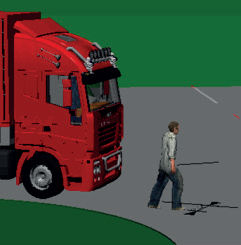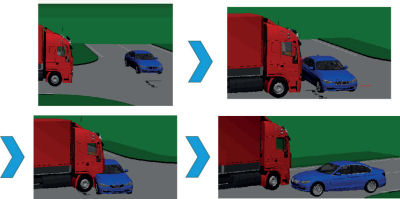More information
Main author
Alejandro Longton
Co-Authors
Núria Parera, Michael Jänsch, Heiko Johannsen
Type of media
Publication type
Lecture
Publication year
2019
Publisher
28 EVU Conference, Barcelona
Citation
-

The overall objective of the AEROFLEX project (AEROdynamic and FLEXible Trucks for Next Genera-tion of Long Distance Road Transport) [1] is to develop and demonstrate new technologies, concepts and architectures for complete vehicles that are energy efficient, safe, comfortable, configurable and cost-effective, while ensuring that the varying needs of customers are satisfied by being flexible and adaptable with respect to the continuously changing operational conditions. These new configurable truck concepts should meet the future logistics and co-modality needs of the different segments and markets.
This paper focuses on the first stage of developing potential architectures for an innovative Front-End Design which will improve safety and help ensure survivability in crashes up to 50 km/h for vehicle occupants and vulnerable road users. In the scope of this paper, relevant accident scenarios are defined using indepth accident data and are simulated with PC-Crash.
The results from the analysis of the in-depth accident data from the German In-Depth Accident Study (GIDAS), showed the frequent and relevant accident types that could be used to prepare crash scenarios with trucks over 16 tons gross vehicle weight. The main crash opponents for the trucks in accidents were cars followed by com-mercial vehicles, bicycles, pedestrian and powered twowheelers.
With the data gathered from GIDAS, a total of 12 relevant accident scenarios were defined. The PC-Crash accident scenario reconstructions were carried out using a comprehensive set of variables from various fields from accident data. The results in PC-Crash are a guideline of the vehicle, pedestrian and cyclist accident behaviour, according to kinetics and biomechanical approaches. Although for some scenarios, case numbers were relatively low, the analysis was able to deliver appropriate information to describe the boundary conditions of the 12 crash scenarios. In order to obtain more accurate values and level of injury a detailed simulation will be carried out with LS-DYNA considering more realistic truck surfaces developed since finite elements. This will be part of future stages of the Aeroflex project.


(EVU-members can download the full article)